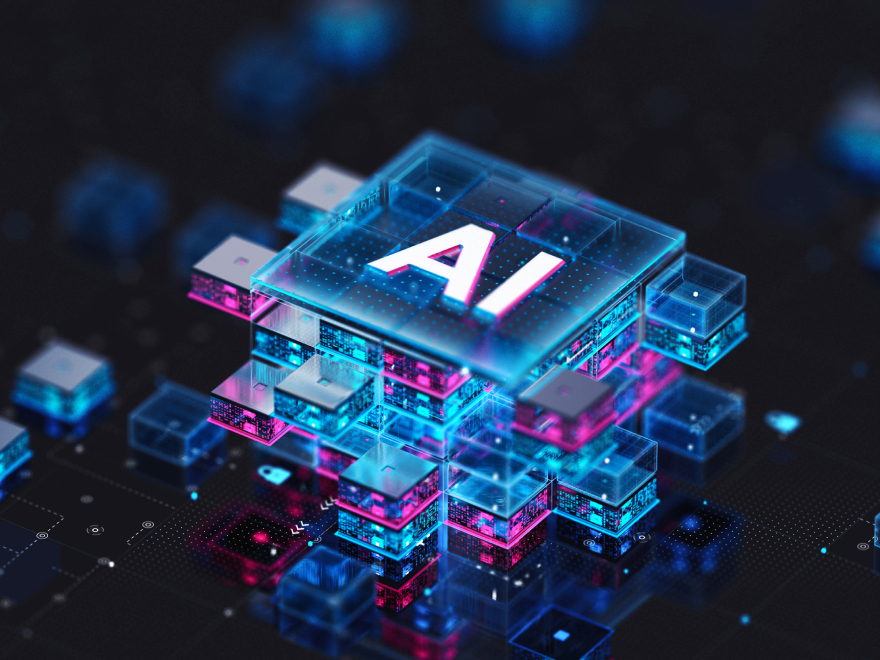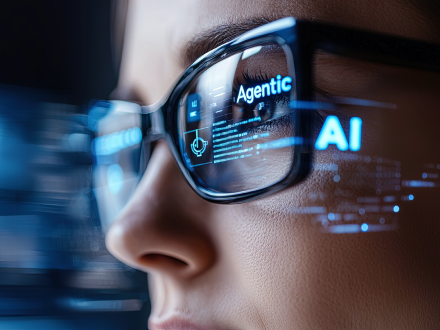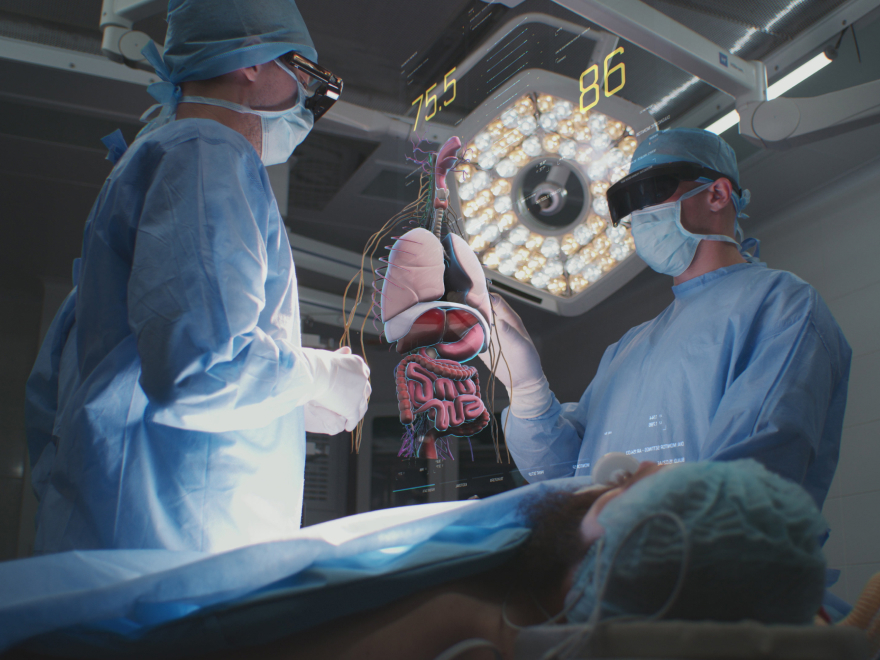Your message has been sent.
We’ll process your request and contact you back as soon as possible.
The form has been successfully submitted.
Please find further information in your mailbox.


As businesses rush into 2025, they find themselves facing a plethora of fundamental challenges, including record-high inflation and significant staff cuts. Tech leaders particularly struggle to navigate tighter budgets and achieve higher returns on investment while having fewer resources at their disposal.
Luckily, despite the economic downturn and controversial market sentiments, there’s a silver lining: businesses are staying steadfast in their commitment to investing in digital transformation initiatives. Speaking in figures, worldwide IT spending is anticipated to reach $5 trillion in 2024, Gartner forecasts. Furthermore, the software development market revenue is poised to achieve a value of $858 billion by 2028, demonstrating a steadfast CAGR of 5.27% from 2024 to 2028. That means one thing: the need for software development trumps galloping prices and limited budgets.
In the article, we highlight the 14 significant software development trends that will define the look of 2024, driving investment and user traction.
Through integrating AI technologies like machine learning, natural language processing, and computer vision into their work routines, businesses are empowered to enhance software development pipelines and operational workflows. Businesses and individuals equipped with sophisticated AI tools augment their creative abilities and concentrate on solving more intricate, nontrivial problems while AI manages mundane and repetitive tasks. Today, artificial intelligence permeates nearly all industries, helping businesses across FinTech, eCommerce, healthcare, manufacturing, etc., address their specific challenges through AI-powered assistants, autonomous vehicles, IoT devices, and more.
As natural pollination in glasshouses using bees is prohibited in New South Wales, Costa Group, a leading fruit and vegetable grower and marketer from Australia, has adopted robotic pollinators equipped with computer vision technology for their tomato greenhouses in Guyra.
Choice Hotels International has implemented Schneider Electric’s EcoStruxure Resource Advisor, an AI-based tool, to monitor energy & water consumption and CO2 emissions across its 6,000 hotels. The company believes this robotic device will enable hotel owners to better understand and control their commercial properties’ carbon footprints.
Low-code development offers a way to build software applications with significantly less coding than traditional methods through visual interfaces, drag-and-drop features, and automated processes. This approach enables both seasoned developers and non-technical individuals to engineer complex solutions, eliminating the hurdles of complicated software logic. As a result, organizations can swiftly adjust to market changes and accelerate their digital transformation initiatives while decreasing hefty IT spending on experienced, mature developers.
By 2030, the low-code development market is expected to reach $187 billion.
70% of new business apps will utilize low-code or no-code technologies by 2025.In essence, edge computing decentralizes data storage and processing by moving resources closer to where the data originates, whether in a retail store, factory floor, utility network, or smart city. Edge computing is expected to become more widespread, transforming internet usage by adding more abstraction and broadening potential use cases. For instance, the intersection of IoT and edge has led to the creation of micronodular data centers (MMDCs). Compact, mobile data centers can be deployed across cities or regions to bring comprehensive data center capabilities much closer to the data source without necessarily locating them there.
In 2023, the global market size for edge computing has reached a value of $16.45 billion, which is projected to grow at a CAGR of 36.9% from 2024 to 2030.
According to recent forecasts, by 2030, North America, Europe, and East Asia are expected to account for 88% of the revenue generated from edge services.
Robotic integration remains a significant trend, driven by advances in sensors, vision technology, and intelligent grippers that enable robots to react to environmental changes in real time and work alongside humans. Today, collaborative robots, or cobots, are increasingly used to assist human workers by taking over heavy, repetitive, or hazardous tasks. This not only aids in reducing physical strain on workers but also enhances safety and efficiency in the workplace. For instance, mobile manipulators, also known as ‘MoMas,’ are revolutionizing material handling in sectors like automotive, logistics, and aerospace. These systems merge the mobility of robotic platforms with the precision of manipulator arms, enabling them to traverse complex environments and easily handle objects.
In a survey conducted by Automation Anywhere, 78% of respondents have indicated that they plan to significantly increase their automation budgets within the next 12 months.
Accenture estimates that 76% of tasks performed by US workers could be transformed by automating repetitive tasks and enhancing high-value activities.
In the business sector, unstructured data is growing rapidly. Advancements in technologies like AI/ML and computer vision, in turn, facilitate the extraction of actionable insights from disrupted information, enhancing decision-making, automating tasks, and uncovering opportunities overlooked by traditional methods.
Another approach to collecting and managing data profoundly is data tiering, classifying data based on factors like relevance, access frequency, and performance requirements. This method optimizes resource utilization by allocating high-priority data to premium storage solutions that offer quick access and low latency, typically through high-performance technologies like solid-state drives. Lower-priority data is directed to more economical storage solutions, such as traditional hard disk drives, balancing cost-effectiveness with performance needs.
Traditionally, data security has been centralized, relying on single points of protection, vulnerable to attacks. Blockchain introduced a decentralized security model, inherently more resistant to fraud, hacking, and unauthorized changes. Today, blockchain technology, once associated mainly with cryptocurrencies, payments, and smart contracts, finds implementation across various industries and domains, reducing the risk of fraud and corruption. With blockchain, supply chains can become more transparent and traceable, as companies can monitor goods from the source to the final destination. It can also be used to build tamper-proof electronic voting systems, prevent election fraud, build trust among participants, and increase voter turnout by simplifying the electoral process.
In September 2023, it was reported that Microsoft AI researchers inadvertently leaked 38 terabytes of private data while releasing open-source training data on GitHub.
In January 2023, Mailchimp, a leading email marketing and newsletter service, discovered an unauthorized user in its system as an intruder accessed user accounts and customer support.Ethical and sustainable software development implies creating technology that prioritizes user privacy, fairness, and accountability while ensuring long-term environmental and social responsibility. Ethically developed software protects user data through robust security measures and transparency, avoids biases, and empowers users with control over their data and interactions. It’s about developing software that honors user privacy, encourages equity, and positively impacts society. Whereas sustainable software is designed for energy efficiency, optimizing resource use to minimize its environmental footprint. It emphasizes creating maintainable code that can adapt over time, thereby extending the software’s lifespan and reducing the need for frequent replacements.
Operating entirely online, neobanks engage with customers and deliver services without the need for physical branches so that users access financial services directly through their gadgets. These purely digital banks gained significant traction during the pandemic as the demand for online banking services increased. However, recently they faced setbacks due to an economic downturn, reduced venture capital funding, and heightened regulatory scrutiny. Nonetheless, we can definitely anticipate a “global resurgence” for neobanks as consumers increasingly embrace online transactions thanks to ease of use, lower fees, and increased access to digital banking products.
The transaction value in the neobanking market is projected to increase to $6.37 trillion in 2024.
The number of users in the neobanking sector is forecasted to rise to 386.30 million by 2028.
This year has marked significant advancements in metaverse technologies, moving towards the broader field of spatial computing. Seen initially as consumer gadgets, spatial technologies are now gaining traction in industrial settings, focusing on digital twins, augmented reality work instructions, and collaborative digital environments.
The industrial metaverse harnesses real-world physics, spatial data, and artificial intelligence to create immersive visualizations that accurately mimic actual processes. For example, line workers might use smart glasses to consult with experts remotely, or engineers might develop new equipment within physics-based, photorealistic digital twins. The development of improved and more accessible high-fidelity 3D assets and extended reality hardware (covering AR, VR, and mixed reality) is setting the stage for a fully operational spatial web.
The market for spatial computing is projected to grow to $544.6 billion by 2032, with a CAGR of 18.2% from 2022 to 2032.
Nearly 80% of manufacturing executives surveyed expressed confidence that the metaverse will revolutionize R&D, design, and innovation in the manufacturing industry.
Though software is seldom considered a significant contributor to CO2 emissions, IT companies can lower their carbon footprint from applications by rethinking conventional methods and integrating sustainability from the outset. Particularly, the increased energy consumption of user devices like mobile phones is tied to their RAM use and network traffic. By shifting more business logic to server-side operations, which are typically more energy-efficient and emit fewer greenhouse gasses (GHG), the demand on the user’s hardware is reduced, thereby also cutting down on the phone charging frequency. Projections from McKinsey indicate that initiating efforts now to enhance software and data sustainability could reduce CO2 emissions by approximately 5% by 2030.
Some certain software development trends gain prominence, while others instantly fizzle out. However, one consistent trend that remains impervious to these shifts is the ongoing digital transformation, an enduring force across all sectors.
Amidst 2024, we find ourselves firmly in the age of technology, yet numerous veteran companies persist in their use of outdated software, missing out on substantial growth opportunities. While many are grappling with suboptimal architectures, others are dealing with inefficient solutions at the same time. Regardless of their specific challenges, all organizations are united in their pursuit of reducing IT ecosystem maintenance costs to lead the pack.
In sum, while some technologies will undoubtedly rise to prominence and others may decline, the overarching trend toward digital transformation is set to persist. For businesses, the choice is becoming increasingly clear: adapt and innovate or risk falling behind. Those who embrace these changes will likely find themselves well-positioned to capitalize on the expansive growth over the long run.
The ever-changing and often unpredictable software development landscape places high demands on businesses, as even a slight delay in technical adoption can cost a fortune. Besides, it’s not enough for businesses to merely follow trends; they must also anticipate new ones.
In the 21st century, we’re witnessing a paradigm shift towards a proactive stance in workflows and operations. Are you ready to forge ahead and navigate the future of software development with foresight and agility? After all, in the bustling marketplace of digital innovation, staying informed is the cornerstone of maintaining a lead.












Your message has been sent.
We’ll process your request and contact you back as soon as possible.

By signing up you agree to our Privacy Policy, including the use of cookies and transfer of your personal information.